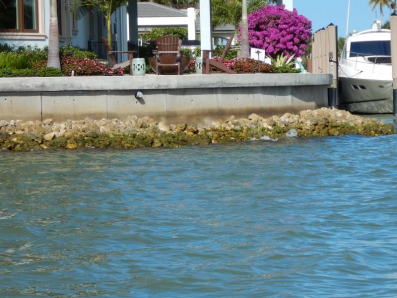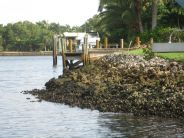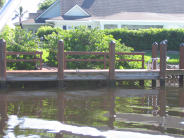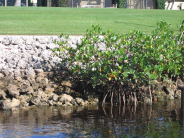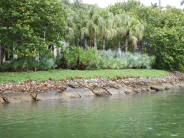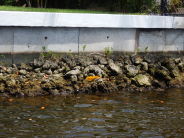Riprap
Construction or repair of riprap requires a marine permit from the Building Department (Marine Permit Application & CityView Electronic Permitting). Seawalls and revetments must be kept in good repair. Rip-rap must be placed at the base of new and repaired seawalls on all natural waterways (City of Naples Ordinance Sec. 52-92(d)). Upon receipt of a permit application, or upon a pre-application consultation, City staff will make a determination as to whether the proposed activities occur in a manmade canal or natural water body and inform the applicant of the decision.
What is riprap?
Riprap is rock material that is placed along shorelines (ideally at a 3:1 or 4:1 slope) and in front of seawalls providing shoreline protection from erosion. Riprap is an environmentally friendly and aesthetically pleasing, natural-looking alternative to seawalls that blend into the environment.
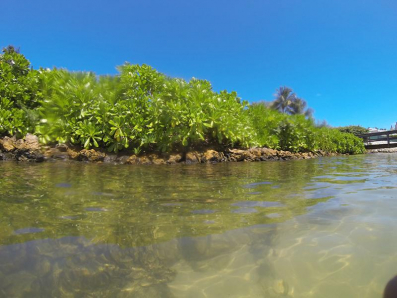
Benefits of riprap:
- Estuarine communities can develop within the nooks and crannies between the rocks through the creation of a shoreline edge that can be used by oysters, crabs, fish, and mangroves
- Protects the land from the erosional force of waves and efficiently absorbs wave energy, which in turn, reduces turbidity and the resuspension of sediments, thus improving water clarity
- More aesthetically pleasing than a seawall
- Is less costly and requires less maintenance than a seawall
- Provides habitat for mangrove recruitment – riprap benefits are enhanced with mangroves, which also help to reduce stormwater runoff pollution
- If mangroves are already present along a shoreline, riprap can be placed amongst the roots allowing enhanced protection without mangrove destruction
Already have a seawall?
The energy in boat wakes reflects off the perpendicular walls without much absorption of that energy, keeping the water agitated and sediments constantly resuspended. This results in increased turbidity and reduced light penetration through the water column. The vertical nature of a wall prohibits mangrove recruitment and does not provide the substrate necessary for beneficial habitats (e.g. oysters reefs) to become established.
Placing riprap (1-2 foot sized rocks) in front of an existing seawall will alleviate some of the negative environmental impacts while lengthening its life by reducing scouring effects at the base of the wall and decreasing the energy of waves pounding into it.
More information on natural shorelines can be found at Florida Living Shorelines.
